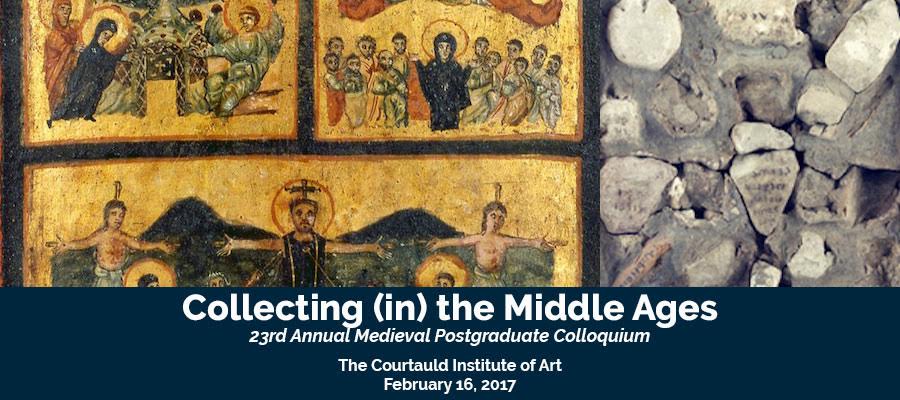Collecting (in) the Middle Ages, 23rd Annual Medieval Postgraduate Colloquium, The Courtauld Institute of Art, February 16, 2017
The Courtauld Institute of Art’s 23rd Annual Medieval Postgraduate Colloquium invites speakers to consider the nature of medieval collections, the context of their creation and fruition, and their legacy — or disappearance — in the present.
Inspired by objects such as a cedar box chest once kept in the Holy of Holies of the Lateran, this colloquium seeks to explore a diverse set of topics surrounding medieval practices of collecting. This wooden box may seem simple, but once opened it reveals a priceless collection: fragments of rock and wood from the Holy Land, each labelled with its precise place of origin by a sixth-century hand. Here and there, stones have fallen out, leaving imprints in the soil. The wooden relic chest is an object of small size and almost no material value, but has nevertheless been treasured for centuries by one of the largest and most powerful institutions of the medieval world.
The study of medieval collecting raises a variety of questions. How and why were objects collected, practically and conceptually? What was their expected time-span and what enabled their survival? How have medieval collections impacted modern scholarship, and how do modern collecting and display practices influence our interpretation of the past?
Applicants to the colloquium are encouraged to explore these issues from a diverse range of methodologies, analysing objects from the 6th to the 16th century and from a wide-ranging geographical span. Possible areas of discussion might include:
- Collecting through time: How do we define the medieval collection/collector? How did medieval objects take on new meanings in medieval collections, ie. in the case of spolia? How has scholarship on medieval art been influenced by varying collecting practices and curatorial strategies across time?
- Collecting in space: can the idea of the ‘collection’ be expanded to include objects, places and spaces spread across different geographical locales? Could objects or spaces communicate their commonality across a distance? How did pilgrimage routes, travel narratives and travel guides conceptualize their surroundings and weave a thread through geographical and historical difference?
- Collectors, intermediaries, and craftsmen: how did institutions and single collectors acquire and expand their collections? For example, did they rely on a merchant network to acquire foreign objects or new relics? Did they collect newly commissioned objects, and display them in purpose-built spaces?
- Collections and Legacies: how did inheritance impact the notion of collecting, looking forwards as well backwards? How did the meaning of objects change as they were passed down through families and dynasties? What happened to collections when familial lines ended? How did individuals link themselves to courts or dynasties through collections?
- Accessibility: When, how and why were collections visible? Were there different levels of accessibility and interaction and who was allowed to ‘access all areas’? How were restricted collections advertised and open collections protected? And did objects themselves interact with each other, for example in specific displays or assemblages?
- Organising Collections: What were the systems for assembling a collection, and for how they were curated? How did purpose-built spaces impact the growth of collections, and vice-versa? What were the roles of documents in collections, and how have medieval recording practices influenced modern views of the medieval collection?
The Medieval Postgraduate Colloquium offers an opportunity for research students at all levels from universities across the UK and abroad to present, discuss and promote their research.
